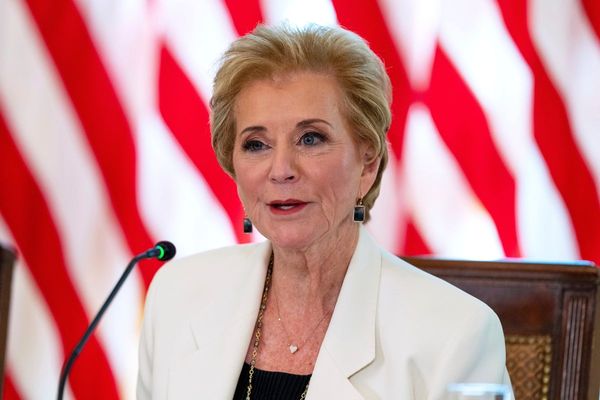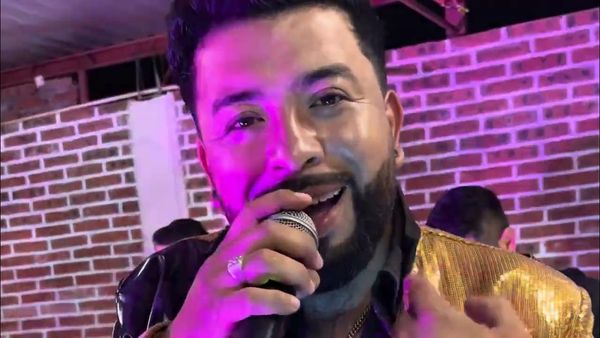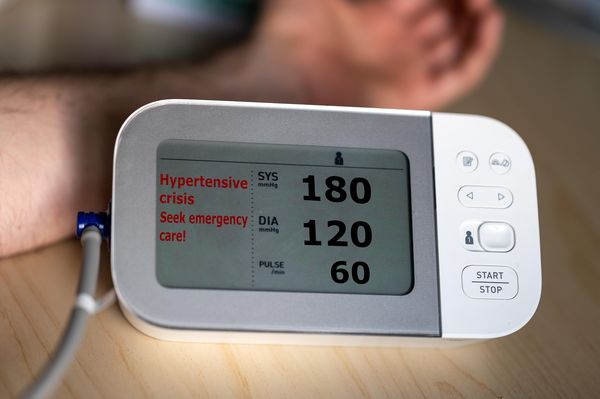
When it was launched in 2016, Theragun was a revolutionary product that created a new category. Since that time, the company has broadened their reach and rebranded as Therabody in 2020 in recognition of that bigger mission. I sat down with Benjamin Nazarian, CEO of Therabody to learn more about the company’s evolution, how he became involved in the business, and how they approach their innovation pipeline.
Dave Knox: What is the origin story of Therabody?
Benjamin Nazarian: Around 2014, I was setting up an incubator to help entrepreneurs who had built great products and really needed a mentor in terms of business operations, strategy, finance, and legal. In the process, I met Dr. Jason Wersland, who had invented this product that became Theragun and was looking for both capital and business help.
I have had a bad back my entire life. If I sleep poorly or the muscles are tight from stress, it can easily trigger to the point where I can't move my neck. I have gone through pretty much every treatment for that. When Dr. Jason came into my office to show me the product, it was not about showing a fancy deck or an investor presentation. He said, "Let me just show you what this thing does. There's no way to really explain it." And he used it on me and it reminded me of the deep muscle therapy that I used to get to loosen up my muscles when they would tighten up. But that deep muscle therapy was a very painful process with someone taking their elbow and sticking it deep into your back. When (Dr. Jason) put this product on me, it provided that deep muscle penetration, but it didn’t hurt. And the reason for that is it hits your body 40 times a second. So your body doesn't even realize it's touching you. And it works so well because your body is actually relaxed while it's doing that deep muscle therapy.
When we started, we never thought that we would be creating a whole category that would be a mass consumer product. If Dr. Jason had come into my office and said, "Oh yeah, that's what this would be," I would have thought he's crazy. When I first met him, he had been working on this for eight years and he had validated it by working with professional athletes, pro football teams, and his own patients in his clinic. So there was some validation to the product, but he really didn't know how to commercialize it, how to bring it to market, or how to get it out there. And we sat down in my conference room and spent hours developing a business plan and it ended up being the blueprint for the first five years of our business. And it's really been a great guiding post for what we need to do to grow the business.
Knox: What has been the brand's evolution from that initial Theragun product to the broader company that today is Therabody?
Nazarian: When we first started, the product and the company name were both Theragun. We only had one product, which was the Theragun PRO. At the beginning, we got a lot of criticism for naming ourselves Theragun because of the negative stigma attached to guns. Today the entire category is called massage guns, but we knew that was a broader mission to our company and we wanted to do more than just a Theragun product line. We spent a number of years looking at different names so that we can rename the company, but keep the product as Theragun. Last year when we were looking to launch our CBD line called TheraOne, we had a whiteboarding session and somebody threw out the comment, "Well, what if we have something around the body in our name because we're really thinking about the entire body. We want to help the whole body. We are for every body." And we thought, "Well, what about Therabody?" It's very difficult to name companies because the domain has to be available, Instagram, Facebook accounts have to be available. And luckily enough, Therabody was available and we nabbed all the names we could and registered it and we rebranded to Therabody to represent our broader mission.
Knox: As the category you created has evolved, what makes Therabody unique and what is the broader company mission?
Nazarian: With so many pro athletes using our products, people look at us as a fitness recovery company. The reality is most of our customers are using the product for the same reason that Dr. Jason invented it, which was when he got injured. He had deep muscular pain. He did not want to resort to opiates and pain medication. He did not want to have surgery. And he ended up inventing this as a natural alternative to those options.
Our mission is to help everybody live a better, healthier life using products that are an alternative to traditional medicine. Theragun is one modality that does that, the same way Dr. Jason invented it, but there are a lot of other great technologies. As a company, our goal is to bring to market the best products that are backed by science. We spent a lot of time on research and validating it to make sure that there is nothing that is gimmicky about it. We can show that there's efficacy behind it. And then how do we bring those products to help consumers address various needs to help them live a better life? There's really no company that is innovating and creating products that are addressing this health and wellness area of alternative pain management and recovery. And we have a very strong leadership position and are looking to bring out new products to help people in different ways.
Knox: As you build your innovation pipeline, what is guiding your approach to new products?
Nazarian: We have a two-pronged approach. One is listening to our customers. What are they looking for? What do they need? What are they asking for? CBD was a great example – Dr. Jason's patients and the pro athletes he worked with were talking about how effective CBD was. But they didn't know what brand to trust, how often to use it, or how much to use. We realized that there was a huge opportunity to come out with a premium product that addressed this. Our TheraOne line is fully USDA certified organic, and we can educate them on the benefits and how to use CBD and how often to use it.
The second prong is what Steve Jobs said, which is that consumers don't necessarily know what they need until you show them. We are looking at a lot of different technologies that are out there that we know work. Maybe they're used by pro athletes, maybe they're not even being used in a consumer fashion. And how do we develop products that are the right form factor, and at the right price points so it can be available to everyday consumers. How do we explain it to them so they understand what the technology does, what the benefits are and how to use it so it can truly benefit them.
We take those two approaches and drive the product development cycle. One important final part is we then have our science team and Dr. Jason do the proper research to make sure that the efficacy is there. Dr. Jason is testing it on patients, on people he works with, and getting feedback. How does it feel? Did it help? What's the right form factor? And after doing all that, we will launch a product and then make that available to the consumer.
Knox: On the science side, what sort of testing do you complete to support the claims of these new products?
Nazarian: We do a lot of research and we have a number of studies underway. We have one that shows the improvement of blood flow and increase in blood flow when using a Theragun which helps drive recovery. We did a study around Theragun helping for sleep and how it helps people sleep better. Rather than just coming out and saying, "These are the things we think," we try to validate it and take a scientific approach to it. There are a lot of gimmicky products out there. People make a lot of claims that they cannot back up. We have heard a number of claims or benefits around Theragun from our consumers. And they say, "How come you don't include this in your marketing?" And the reality is we want to make sure we can back it up before we say it. And so we take a very thoughtful and scientific approach to it. We have a brand that people trust. And I think the most important thing is never breaking that trust. We're very thoughtful, but we want to make sure we're approaching it the right way.
Knox: When it comes to your innovation strategy, is it all internally developed or do you explore external opportunities as well?
Nazarian: Our goal is to help people and to come out with products and technologies that will do that. We have a very strong R&D team and a very strong engineering team, but it doesn't mean that we can do everything. And so one good example is our acquisition of PowerDot in the electric stimulation business. Stimulation was something that was readily available in a physical therapy clinic before and PowerDot was able to bring it to a consumer to use at home in a very easy way with a very understandable and easy to use app. It was not something that we could replicate as well as they could. We have had a great relationship with them for a number of years and that led to Therabody acquiring them and having PowerDot and their team join us to make that product available on a global basis.
Knox: As you think about your marketing communication, how do you balance the line between being a solution for both professional athletes, as well as the everyday consumer?
Nazarian: It's such an important part of what we talk about because it's easy for someone to say, "This is for professional athletes. I'm not a basketball player. I'm not a football player. Why do I need this?" And part of what we do is actually work with the pro athletes, our ambassadors, to have them tell the story of why they use it and how they use it. And the stories that they tell apply to every single one of us. I'm not a weekend warrior by any stretch, but I use the Theragun. We work with our pro athletes to tell those more human stories because athletes at the end of the day have bodies like us. Yeah, they put a toll on their body in a very different way, but we also put a toll on our bodies. We try to tell the story of how our products help everyone who's got a muscle and puts a toll on their body. Whether it's me which puts a toll on my body through exercise or travel or someone who's got a physically grueling job like in the construction sector or sitting behind a Zoom call for 12 hours, we all put a strain on our muscles and we can treat our muscles in a way that does not need to resort to pain medication. And that's our goal.
Knox: You were first introduced to Theragun through the incubator you ran. How has being involved in the entrepreneurial ecosystem helped you as you’ve grown Therabody?
Nazarian: I have been really fortunate because I have been both on the operational side of running companies, as well as on the investment side looking at companies. The investment side allows me to learn what the entrepreneurs have done that worked and what mistakes have they made. There are a lot of lessons that I have learned from other people's mistakes. Not every venture investment works out so you get to learn from other people's failure. There are two big lessons that I have learned.
Number one is money doesn't solve all problems. Companies go and raise substantial amounts of money and sometimes that makes you have to be less scrappy and not as smart in the way you approach things because you can throw money at the problem. And we have been profitable every year since 2017 and we've been very thoughtful about where to invest and how to grow; we didn't just go by customers or by revenue. We have done it in a very thoughtful way.
And the second lesson has been that you are going to keep running into roadblocks. But how do you pivot? How do you problem solve? And how do you keep pushing through whenever you run into a problem? And we've applied those same philosophies at Therabody to grow the business.







